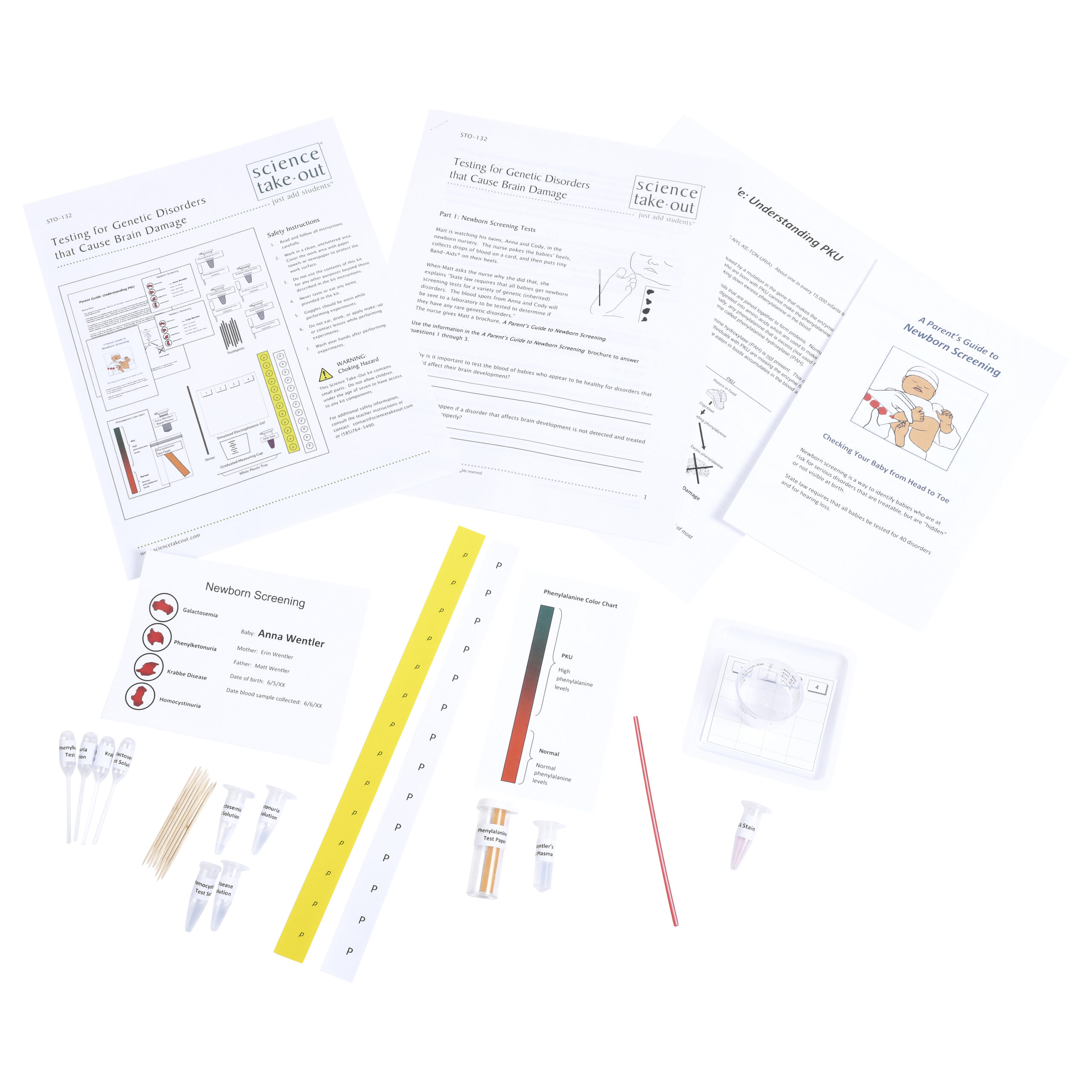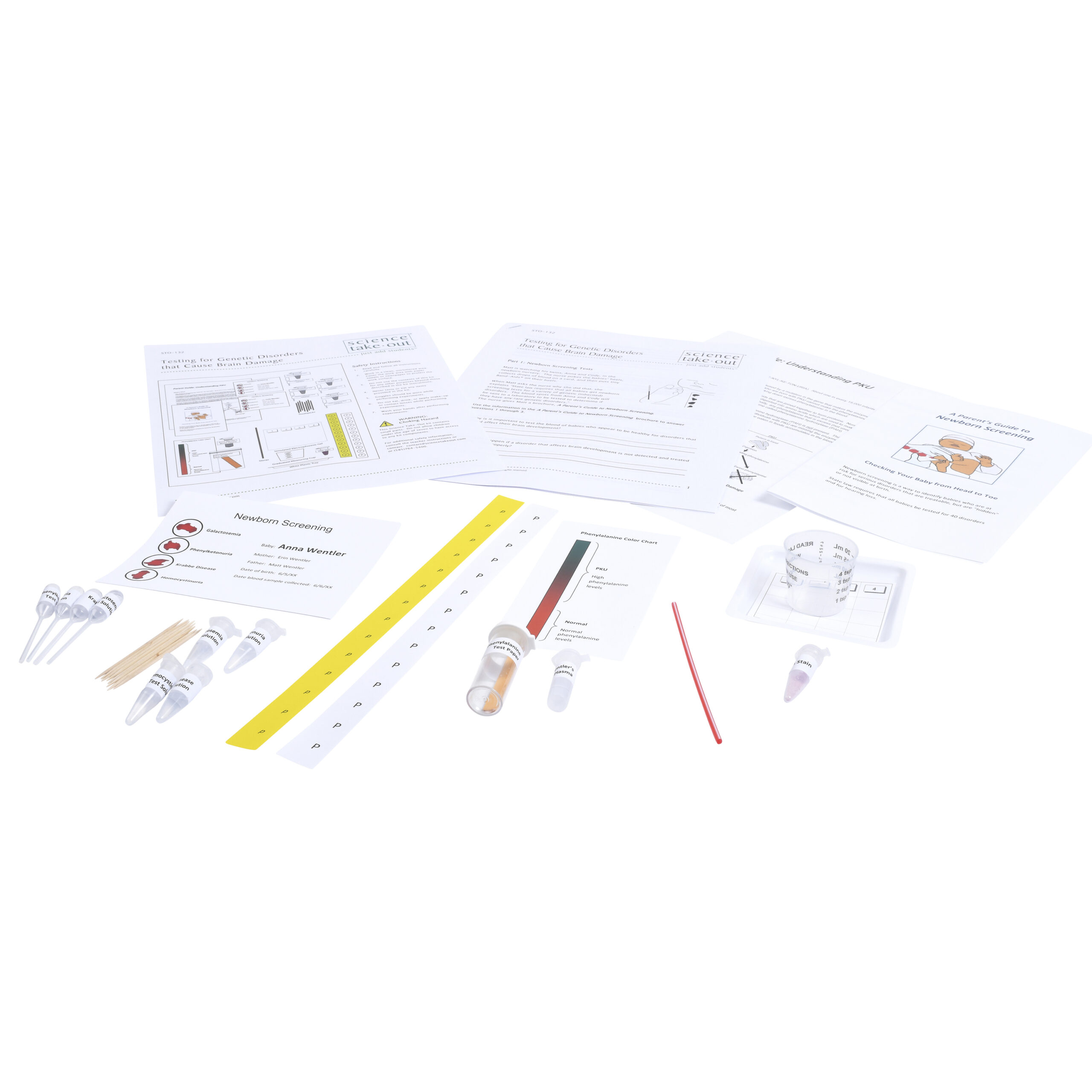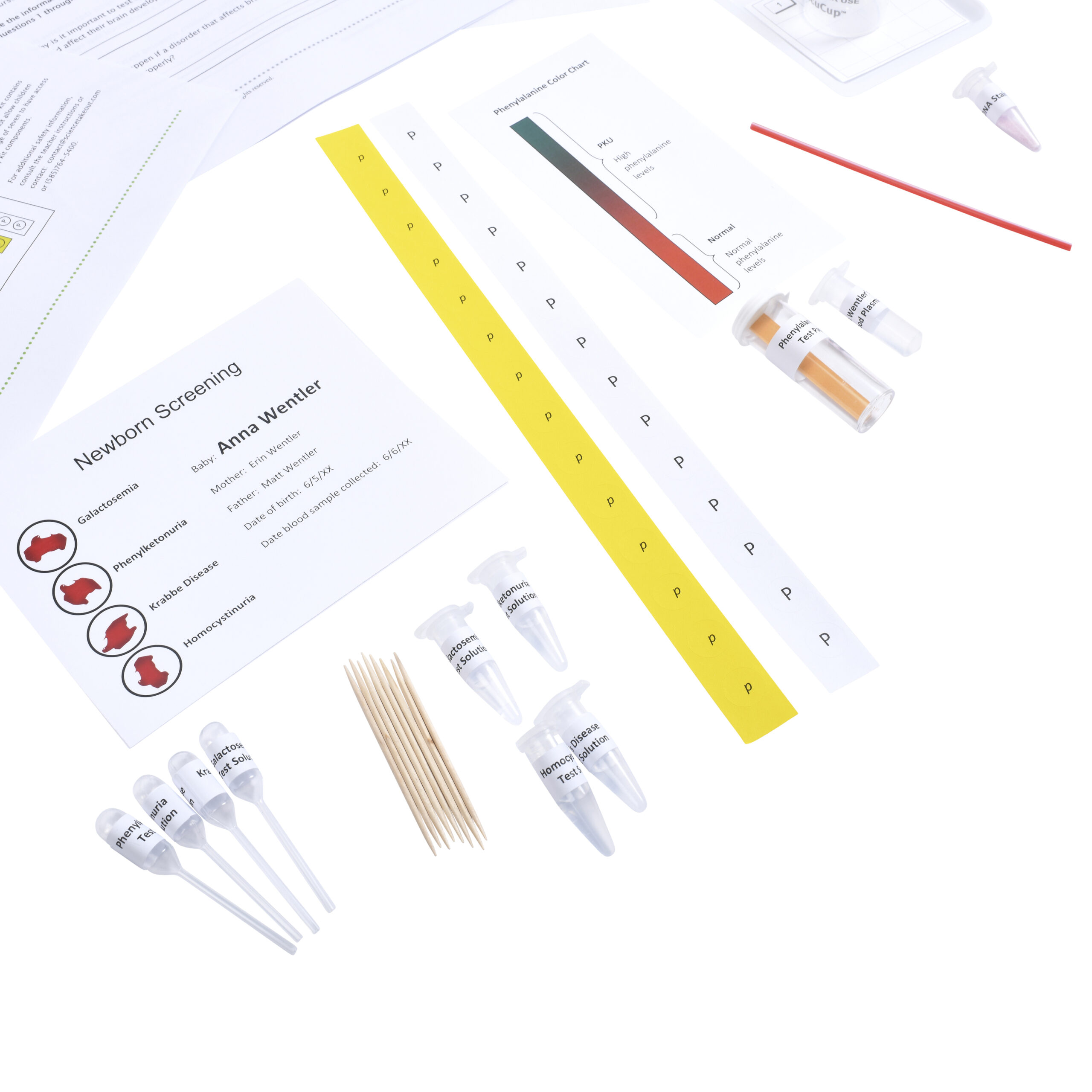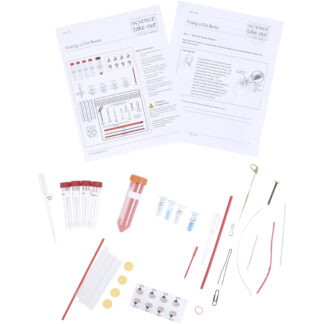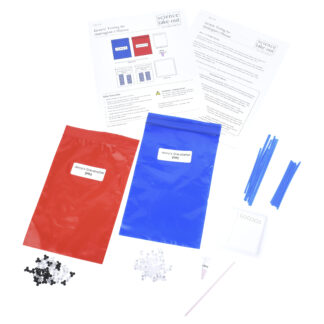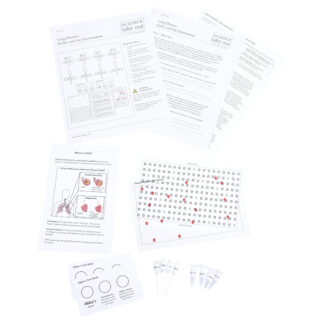Testing for Genetic Disorders that Cause Brain Damage
$19.95 – $142.95Price range: $19.95 through $142.95
Quantity Discounts Available! →
Explore genetic testing for PKU.
Follow the case of twins who have newborn screening for genetic disorders.
- Conduct simulated newborn screening tests and follow-up blood tests that reveal that one of the twins has phenylketonuria (PKU).
- Learn how brain damage from PKU can be prevented.
- Explore inheritance of the gene that causes PKU using a Punnett square and simulated genetic testing.
Kit Includes
- Student instructions
- 2 “Newborn Screening” test cards
- Simulated test solutions for four genetic disorders
- 8 toothpicks
- 1 tube of simulated “Anna Wentler’s Blood Plasma”
- 1 strip of simulated “Phenylalanine Test Paper”
- Phenylalanine color chart
- 1 tube of simulated “DNA Stain”
- 1 stirrer
- 1 plastic tray
- 1 small measuring cup
- Strips of P and p stickers
- 1 simulated “Electrophoresis Gel”
- A Parent’s Guide to Newborn Screening
- Parent Guide: Understanding PKU
Quantity Discounts
Kits:
- 1 – 9 kits: $19.95 each
- 10 – 24 kits: $18.95 each
- 25+ kits: $17.96 each
Unassembled:
- 1 – 9 packs: $142.95 each
- 10+ packs: $135.80 each
Refills:
- 1 – 9 packs: $65.95 each
- 10+ packs: $62.65 each
Correlation to Next Generation Science Standards (NGSS) Shop by NGSS »
Performance Expectations:
MS-LS3-2. Develop and use a model to describe why asexual reproduction results in offspring with identical genetic information and sexual reproduction results in offspring with genetic variation.
Science & Engineering Practices
Developing and Using Models - Develop and use a model to describe phenomena.
Disciplinary Core Ideas
LS1.B: Growth and Development of Organisms - Organisms reproduce, either sexually or asexually, and transfer their genetic information to their offspring.
LS3.A: Inheritance of Traits - Variations of inherited traits between parent and offspring arise from genetic differences that result from the subset of chromosomes (and therefore genes) inherited.
LS3.B: Variation of Traits - In sexually reproducing organisms, each parent contributes half of the genes acquired (at random) by the offspring. Individuals have two of each chromosome and hence two alleles of each gene, one acquired from each parent. These versions may be identical or may differ from each other.
Crosscutting Concepts
Cause and Effect - Cause and effect relationships may be used to predict phenomena in natural systems.
